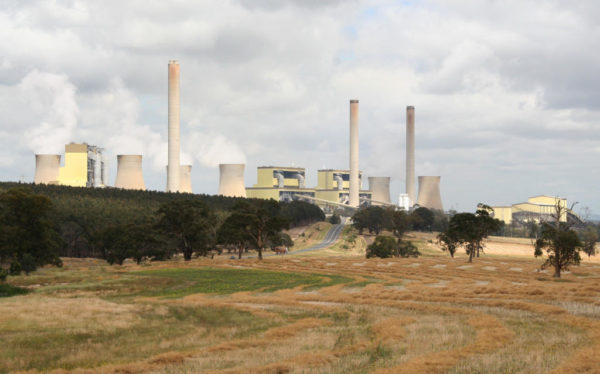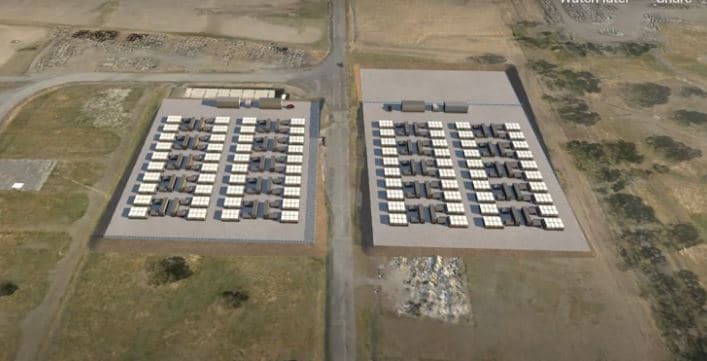AGL confirmed on Tuesday it had lodged an application with the Victorian Minister for Planning and the Department of Environment, Water, Land and Planning for a 200 MW, four-hour duration grid-scale battery to be built adjacent to the brown coal-fuelled Loy Yang Power Station.
The energy giant has previously declared its aim to add at least 850 MW of new large-scale battery storage to its portfolio by the end of 2024 and said the Loy Yang project is part of the company’s energy transition.
AGL chief operating officer Markus Brokhof said batteries will be an important part of the technology mix needed to deliver Australia’s energy needs in the decades ahead.
“This project will play a critical role in transforming the reliability of renewables in Victoria, providing essential firming capacity and storage,” he said.
“With the commissioning of Loy Yang A in 1985, the Latrobe Valley has a long and proud of history of generating electricity to thousands of Australian households and businesses.
“The region will continue to play an important role in providing reliable and affordable energy, this project is part of both the AGL and the region’s transition and path to a lower emissions future.”
AGL has already laid out plans for the deployment of about 1.2 GW of utility-scale battery energy storage systems (BESS) across multiple locations, including a 250 MW, four-hour-duration battery system to be built at the site of its Torrens Island power station in South Australia.

Image: Marcus Wong Wongm/ Wiki Commons
The company has plans to build utility-scale batteries at its Liddell power station (150MW) and at Broken Hill (50MW) in New South Wales and has announced support for battery projects at Wandoan (100 MW) in Queensland and Maoneng (4 x 50 MW) in NSW. It is already operating the 30 MW/ 8 MWh BESS at Dalrymple in South Australia.
The energy provider as also signed non-exclusive framework agreements with energy storage technology companies Fluence and Wärtsilä to supply up to 1 GW of large-scale battery storage.
AGL, which earlier this year was branded the nation’s biggest polluter, emitting more than 42 million tonnes of carbon emissions in 2020, has promised to transition to “full decarbonisation” by 2050 and said batteries would be crucial in that process.
“It is through low-emission firming technologies like batteries that we can create sustainable energy for our customers as well as deliver on our Climate Statement commitments which include net-zero emissions by 2050,” Brokhof said.
AGL is one of a number of gen-tailers, developers, network owners and service providers to announce new battery projects in recent months as the search for essential stabilising services to the grid ramps up as coal-fired generators are retired.
EnergyAustralia earlier this month announced it would replace its Yallourn coal-fired power station in the Latrobe Valley with a four-hour 350 MW capacity big battery.
Others who have joined the big battery race include French renewables developer Neoen, which announced in January plans for a 500 MW / 1000 MWh big battery to be built west of Sydney, while later that month Origin Energy announced it would build a 700 MW mega-battery with a dispatch duration of four hours at the site of its ageing Eraring Power Station in the NSW Hunter region.
This content is protected by copyright and may not be reused. If you want to cooperate with us and would like to reuse some of our content, please contact: editors@pv-magazine.com.









2 comments
By submitting this form you agree to pv magazine using your data for the purposes of publishing your comment.
Your personal data will only be disclosed or otherwise transmitted to third parties for the purposes of spam filtering or if this is necessary for technical maintenance of the website. Any other transfer to third parties will not take place unless this is justified on the basis of applicable data protection regulations or if pv magazine is legally obliged to do so.
You may revoke this consent at any time with effect for the future, in which case your personal data will be deleted immediately. Otherwise, your data will be deleted if pv magazine has processed your request or the purpose of data storage is fulfilled.
Further information on data privacy can be found in our Data Protection Policy.